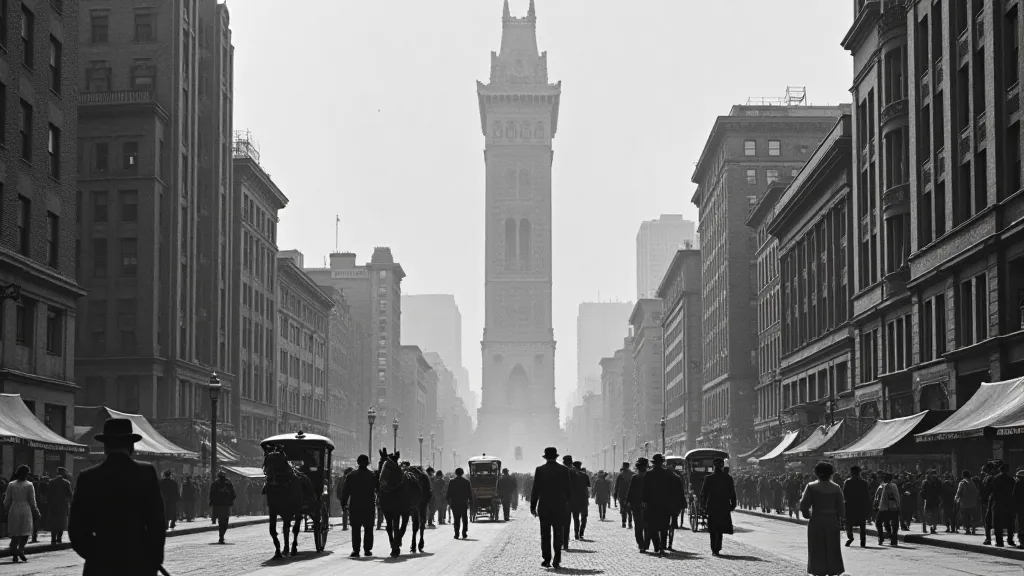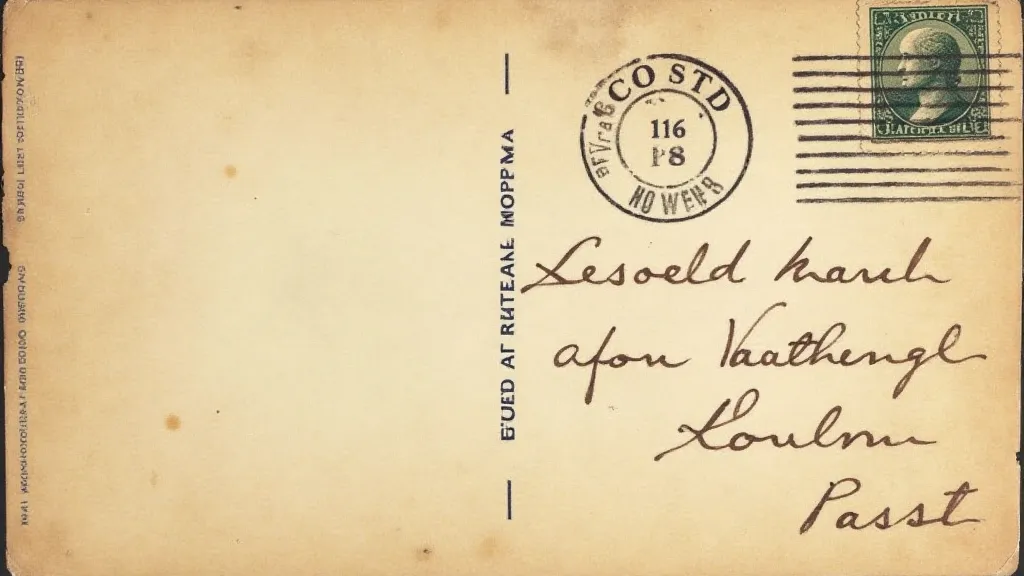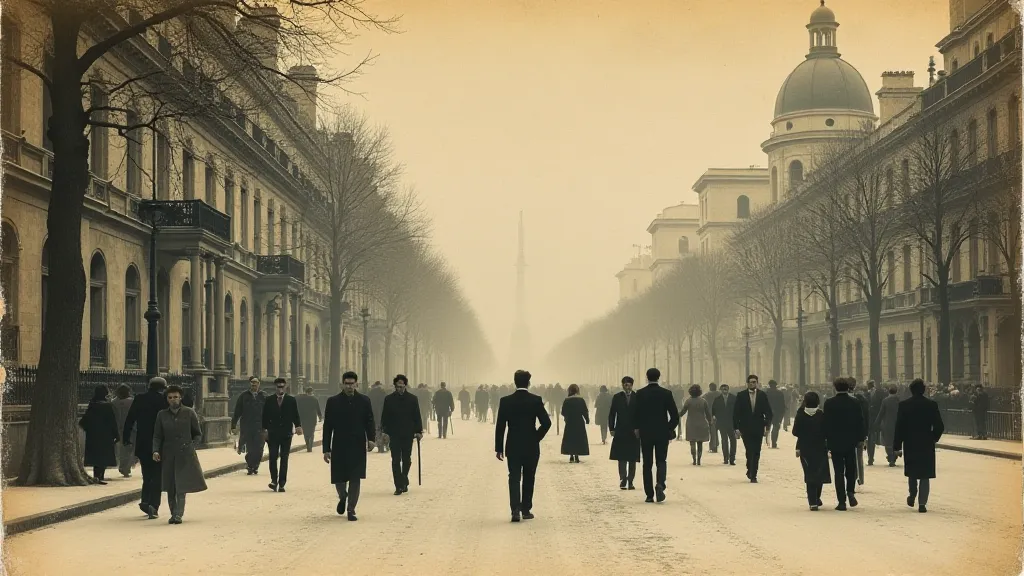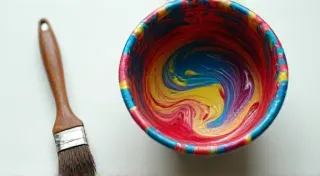Shadows of Progress: Postcards & The Rise of Urban Inequality
There's a particular scent that clings to antique postcards—a blend of aged paper, fading ink, and the ghost of a long-ago journey. Holding one in your hand, you're not just looking at an image; you're touching a moment. I remember finding a small box of them at a dusty estate sale years ago. The sunlight streaming through the window illuminated the vibrant colours, momentarily frozen in time. They weren’t pristine, of course. Edges were worn, corners frayed, but each held a quiet dignity, a whisper of the lives they'd documented.
Most often, these "golden age" postcards (roughly 1890 to 1930) depict grand vistas, bustling thoroughfares, and optimistic visions of urban life. They're a testament to the era's burgeoning industrialization and the belief in progress. Think of a sparkling Chicago skyline, a vibrant Parisian boulevard, or a New York City teeming with energy. They were marketed as a cheap and accessible way to share experiences – a tangible echo of a place and a promise of connection. Yet, buried within these carefully constructed images lie subtle, and sometimes not-so-subtle, revelations about the stark inequalities shaping these burgeoning cities. It's a dichotomy that's profoundly moving and deeply instructive for any serious collector.
The Allure of the Picture Postcard and the Industrial Boom
The rise of the picture postcard is inextricably linked to the Industrial Revolution. Advances in photography, coupled with the invention of the "razorback" printing process (which allowed for the back of the card to be printed cheaply), made mass production possible. The Postmaster General's decision in 1898 to allow messages to be written on the postcard's address side further fueled the phenomenon. Suddenly, a visual message could be sent across continents for a mere penny. It was a revolution in communication, a democratizing force – seemingly.
But who was sending and receiving these postcards? While marketed as a tool for everyone, access to them, and the ability to travel to the places they depicted, was unevenly distributed. These images were often intended for a specific demographic: the middle and upper classes, those who had the leisure to travel and the disposable income to send (and receive) these miniature souvenirs. Consider the postcards of London, showcasing gleaming new department stores alongside overcrowded slums – two worlds existing side by side, rarely acknowledged in the rosy depictions sent to relatives in the countryside. The proliferation of these images helped shape a particular narrative of urban life, a curated view that often masked the realities faced by those in less privileged circumstances. Understanding how these narratives were constructed and disseminated is key to appreciating the complexities of the postcard era. It's fascinating to consider how this seemingly universal technology contributed to shaping perceptions of cities and their inhabitants.

The Geography of Exclusion
Look closely at the postcards depicting cities, and you're likely to notice a pattern. The “best” views – the grand boulevards, the impressive monuments, the newly constructed buildings – are almost exclusively featured. Less desirable areas, the working-class neighbourhoods, the slums, the factories spewing smoke – these are conspicuously absent. This wasn't necessarily malicious. Often, it was a matter of practicality. Photographers needed good light and safe locations. Publishing images of poverty and blight wasn't seen as commercially viable. But the effect is the same: a curated, sanitized version of urban reality. The selection of what to include, and equally importantly, what to exclude, speaks volumes about the values and biases of the time. It's a reminder that even seemingly objective representations of reality are always shaped by perspective and agenda.
Think about Philadelphia, for instance. Postcards often celebrated the City of Brotherly Love's stately mansions and public buildings. But the reality for many recent immigrants, crammed into overcrowded tenements in South Philadelphia, was far from idyllic. The postcards tell a story of aspiration and achievement, but they conveniently ignore the sacrifices and hardships that underpinned that progress. Geographic disparities were, and continue to be, significant and visible even through a seemingly innocuous image. Indeed, the deliberate choices made by publishers to focus on certain districts while neglecting others contributed to a distorted understanding of the city's overall character. This selective representation is a crucial element in understanding the postcard's role in shaping public perception.
Craftsmanship and the Subtle Art of Composition
The artistry involved in creating these postcards is often overlooked. While early postcards were often simple photographic prints, later cards incorporated techniques like hand-tinting and photochromes (a process of adding color to black-and-white photographs). The choice of angle, the careful framing of the composition – all were deliberate choices designed to create a particular impression. A photograph taken from a slightly elevated position can make a city look more impressive than it truly is. The removal of certain buildings or street furniture can create a more pleasing aesthetic. It's a testament to the power of visual manipulation – even in something as seemingly innocent as a postcard. The impact of these techniques shouldn't be underestimated; they represent a conscious effort to shape the viewer's experience and reinforce particular narratives.
Examining the back of these postcards can provide additional insights. The publisher's logo, the postal markings, the handwritten message – all contribute to the card’s history and value. A postcard sent from a distant location, or bearing a rare postal stamp, can be highly sought after by collectors. Furthermore, the language used in the message itself can provide clues about the sender's social status and worldview. Did they describe the city with unbridled enthusiasm, or did they express a more nuanced perspective? The stories behind these messages offer glimpses into individual lives and experiences, providing a more personal connection to the past. It's amazing to think about the diverse range of lives that these small pieces of paper represent; some reflecting immense privilege, others depicting immense struggle.

Restoration and the Ethics of Preservation
The fragile nature of these relics demands a careful approach to preservation. Postcards are susceptible to fading, staining, and tearing. While some restoration is possible—carefully cleaning soiled surfaces, mending torn edges—it’s important to tread carefully. Excessive restoration can diminish a postcard’s historical value and authenticity. It's a balancing act between preserving the physical integrity of the card and respecting its original condition. Many collectors prefer to leave minor imperfections intact, as they tell a story in themselves. The philosophical debates surrounding restoration are fascinating, prompting questions about authenticity, interpretation, and the responsibility of preserving historical artifacts. It's a complex field with no easy answers; what constitutes acceptable intervention versus damaging alteration?
When acquiring antique postcards, consider their provenance – their history of ownership. A postcard with a documented history, perhaps passed down through a family, is often more valuable than one whose origins are unknown. The value isn't solely based on scarcity or condition, but also on the story the card holds. It’s about connecting with the past, understanding the context in which the postcard was created, and appreciating the human stories behind the images. This dedication to uncovering the narratives behind the cards is what truly elevates the collecting experience – it’s about more than just owning an object; it’s about understanding its place within a broader historical context. For many, the true value comes from the detective work involved in piecing together the card's journey through time.
Beyond the Picture: A Reflection of a Divided Age
Collecting antique city postcards isn't just about acquiring pretty pictures. It’s about delving into a fascinating period of social and economic transformation. It’s about recognizing the complexities and contradictions of a rapidly changing world. These small pieces of paper offer a unique window into the past, revealing both the triumphs and the tragedies of urban progress. They remind us that even the most optimistic visions are often built on a foundation of inequality. The deliberate exclusion of certain realities—the poverty, the hardship, the struggles of the working class—highlights the skewed perspective that often characterized the era. Those seeking a deeper understanding of this period would benefit from considering A Thousand Windows: Postcards & The Democratization of Urban Views to gain a more holistic perspective on how these images shaped perceptions.
It's important to acknowledge that the narratives presented on these postcards often reinforced existing power structures and social hierarchies. The emphasis on progress and prosperity often masked the exploitation and suffering that underpinned that progress. The choices made by publishers, photographers, and even senders, all contributed to a selective and often biased representation of reality. The lasting legacy of these postcards lies not only in their aesthetic appeal but also in their ability to spark critical reflection on the past. Beneath the Gilding: Detecting Forgeries and Reproductions in the Postcard Marketplace offers insight for collectors keen to understand the production and distribution of these potent visual narratives, further illuminating their power to shape public opinion.

The Enduring Allure and Lessons Learned
Ultimately, antique city postcards serve as powerful reminders of a bygone era, inviting us to confront the complexities and contradictions of urban life. They encapsulate a moment in history, a snapshot of aspirations and inequalities, progress and exploitation. They prompt us to question the narratives we inherit and to seek a more nuanced understanding of the past. The ongoing examination and thoughtful curation of these historic artifacts remains crucial to understanding not only the past, but also informing our present and future. Indeed, the effort to preserve and interpret these objects continues, ensuring their stories resonate across generations.





